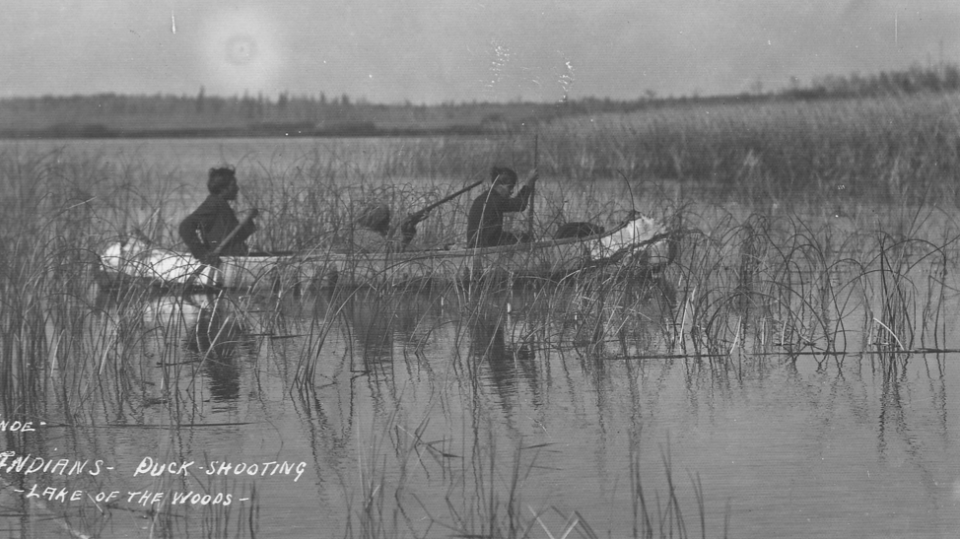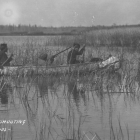
Fig. 1. Map of the hydroelectric dams on the Upper Winnipeg River in Northwestern Ontario, Canada. The Kenora Dam was first installed in 1892, and the Norman Dam in 1893. Both were updated to generating stations in 1906 and 1926, respectively. Whitedog Falls Generating Station (G.S.) was installed 50 kilometers downstream of Kenora in 1958.
Fig. 1. Map of the hydroelectric dams on the Upper Winnipeg River in Northwestern Ontario, Canada. The Kenora Dam was first installed in 1892, and the Norman Dam in 1893. Both were updated to generating stations in 1906 and 1926, respectively. Whitedog Falls Generating Station (G.S.) was installed 50 kilometers downstream of Kenora in 1958.
Map by Samantha Mehltretter, OpenStreetMap, and contributors.
 This work is licensed under a Creative Commons Attribution-ShareAlike 4.0 International License.
This work is licensed under a Creative Commons Attribution-ShareAlike 4.0 International License.
In the Northwestern region of what is now Ontario, Canada, lies the outlet of Lake of the Woods (LOW), draining into the now slow-moving waters of the Winnipeg River. In the late 1800s, however, Samuel Benfield Steele described the Winnipeg River as “one of the most difficult in the world” to navigate. Settler-colonists forever changed the system when they harnessed water energy to generate hydroelectric power and stimulate the development of Kenora (see Fig. 1 for location). The first dam on the Winnipeg River was built in 1887 at the outlet of LOW. It was later replaced by the Kenora Dam and Norman Dam. First Nations quickly expressed concerns about the impact of water regulation on aquatic crops. In 1890, Anishinaabe Chief Thomas Lindsay complained,
Since the Dam was built across the Mouth of the River it is higher and has killed all our Wild Rice … a great loss to us (Kinew, 1995).
Canada did not actively consider Anishinaabe concerns about crop yields in 1890 or during the industrial boom that followed World War II. Canada focused on meeting the electrical demands of its settler population. Within Ontario, power demands increased 250 percent between 1945 and 1957 which prompted the Hydro-Electric Power Commission of Ontario (HEPCO) to modify the Winnipeg River to satisfy them. Whitedog Falls Generating Station was completed in 1958. Changes to the river system may have increased prosperity for Canadians generally, but Anishinaabe lifestyles suffered. Related legal settlements have focused on land loss and devaluation. The impact on food security, particularly aquaculture, has yet to be considered.

Fig. 2. Anishinaabe harvesters at work in manomin stands, n.d.
Fig. 2. Anishinaabe harvesters at work in manomin stands, n.d.
Unknown photographer, n.d.
Courtesy of the MUSE – Lake of the Woods Museum.
Used by permission
The copyright holder reserves, or holds for their own use, all the rights provided by copyright law, such as distribution, performance, and creation of derivative works.
Well before settlers impinged on the Winnipeg River, the Anishinabeg relied on the river’s source of wild rice (henceforth manomin), a complex carbohydrate and native cereal, to complement the lean protein in their diet from fish. It was not only a historic staple in Anishinaabe diets and considered essential to winter survival, but also provided a secondary income to First Nations as they engaged in settler markets. Manomin improved economic security on reserve in the late nineteenth and early twentieth centuries. Elders at Niisaachewan Anishinaabe Nation (NAN) estimate that their ancestors harvested five hundred thousand pounds of manomin from nearby fields. Today, oral testimony suggests that contemporary yields have declined by 99 percent. Band members of NAN who live along the Winnipeg River associate contemporary food insecurity with the historic installation of hydroelectric dams and their continued operation.

Fig. 3. The high-water mark on the river’s Precambrian bedrock shoreline on the Winnipeg River.
Fig. 3. The high-water mark on the river’s Precambrian bedrock shoreline on the Winnipeg River.
Photograph by Brittany Luby, 2018.
© Brittany Luby and Niisaachewan Anishinaabe Nation
Used by permission
The copyright holder reserves, or holds for their own use, all the rights provided by copyright law, such as distribution, performance, and creation of derivative works.
Large impoundments like those installed on the Upper Winnipeg River in the 1900s drastically altered natural water level patterns. These fluvial changes can have detrimental impacts on local ecology, including manomin growth. Elders from NAN are intimately knowledgeable of manomin habitat needs. In 2018, Elder Terry Greene shared with researchers that manomin “is dependent on a fairly low water level beginning in the springtime.” If the water level is too high after germination, the light cannot reach the seedling to produce the energy needed to grow to the water’s surface. Also in 2018, Elder Clarence Henry described this as “something like drowning out [manomin].” Rapid increases in water levels can also negatively impact manomin before harvest. Elder Danny Strong told researchers, “the water would start rising pretty quick and then they’d [manomin], … start falling down.” Archie Wagamese, another NAN Elder, put it simply: “everything used to grow nice before … those dams.”

Fig. 4. Kenora Powerhouse, a hydroelectric generating station affecting levels on the Winnipeg River. It was first built in 1892, and later converted to a generating station in 1906.
Fig. 4. Kenora Powerhouse, a hydroelectric generating station affecting levels on the Winnipeg River. It was first built in 1892, and later converted to a generating station in 1906.
Photograph by Brittany Luby, 2018.
 This work is licensed under a Creative Commons Attribution 4.0 International License.
This work is licensed under a Creative Commons Attribution 4.0 International License.
When food insecurity is considered in discussions of fluvial regulation, potential solutions to restore traditional foods like manomin can be explored. Re-establishing ancestral crops for First Nations like NAN is of great importance not only to improve food security but also to improve community health. Shinjini Pal, François Haman, and Michael A. Robidoux examine the relationship between reduced consumption of traditional foods among First Nations in Ontario and widespread obesity and related chronic illnesses like hypertension, heart disease, and diabetes on reserve. Many of the Elders at NAN maintain that diabetes increased as manomin fields declined. Wagamese shared with researchers: “everybody has got the sugar and diabetes … But, in those days [when we harvested manomin], you never had anything like that.” Ancestral foods, like manomin, are nutritionally dense and require expended energy to obtain and process for consumption. In contrast, westernized or market food is often made up of simple sugars and saturated fats that require little work to obtain and ingest. Elder Terry Greene explains that fast-food restaurants have “taken over.” Greene believes “that’s why a lot of our Native people are … getting a lot of diabetes.” For Elders at NAN, the history of industrial expansion in Canada is directly linked to the history of disease and crop destruction.
Fig. 5. NAN Knowledge Keeper Terry Greene speaks to University of Guelph Researcher Samantha Mehltretter about what wild rice means to him.
Anishinaabe histories of manomin decline require us to broaden explanations of food insecurity on reserve. Limited discussion of the Anishinabeg harvesting cereal crops (like manomin) in the historical literature and contemporary negotiations may be tied to colonial stereotypes, such as those identified in Sarah Carter’s research, that “[t]he Indian was not a natural farmer. He was a born hunter and warrior” or, perhaps, our association of cereal crops—like wheat and barley—with the land. Oral histories from NAN Elders, however, illustrate that water level regulation must be considered in discussions of food insecurity and dietary health on reserves in Canada. This broader perspective provides new ideas for responding to Canadian colonialism (and related losses) from the water.
How to cite
Mehltretter, Samantha, Brittany Luby, and Andrea Bradford. “Hydroelectric Power and Anishinaabe Diets: What Oral Testimony Suggests About Managing Food (In)security on Reserve.” Environment & Society Portal, Arcadia (Summer 2020), no. 33. Rachel Carson Center for Environment and Society. https://doi.org/10.5282/rcc/9112.
ISSN 2199-3408
Environment & Society Portal, Arcadia
 This work is licensed under a Creative Commons Attribution 4.0 International License.
This work is licensed under a Creative Commons Attribution 4.0 International License.
2020 Samantha Mehltretter, Brittany Luby, and Andrea Bradford
This refers only to the text and does not include any image rights.
Please click on the images to view their individual rights status.
- Carter, Sarah. Lost Harvests: Prairie Indian Reserve Farmers and Government Policy. Montreal: McGill-Queen’s University Press, 1993.
- Crown-Indigenous Relations and Northern Affairs Canada. “The Specific Claims Policy and Process Guide.” Government of Canada, 2010.
- Kinew, Kathi Avery. “Manito Gitigaan: Governing in the Great Spirit’s Garden: Wild Rice in Treaty #3.” PhD diss., University of Manitoba, 1995.
- Luby, Brittany. Dammed: The Politics of Loss and Survival in Anishinaabe Territory. Toronto: York University, 2016.
- Pal, Shinjini, François Haman, and Michael A. Robidoux. “The Costs of Local Food Procurement in Two Northern Indigenous Communities in Canada.” Food and Foodways 21, no. 2 (2013): 132–52.
- Steele, Samuel Benfield. “Running the Winnipeg River, 1870.” Manitoba Pageant 17, no. 3 (1972 [1870]): 5.
- Vennum, Thomas, Jr. Wild Rice and the Ojibway People. Saint Paul: Minnesota Historical Society Press, 1988.










